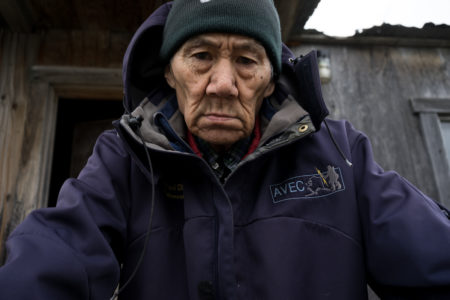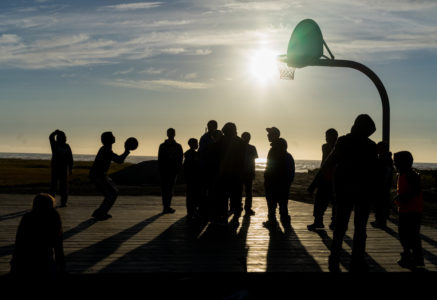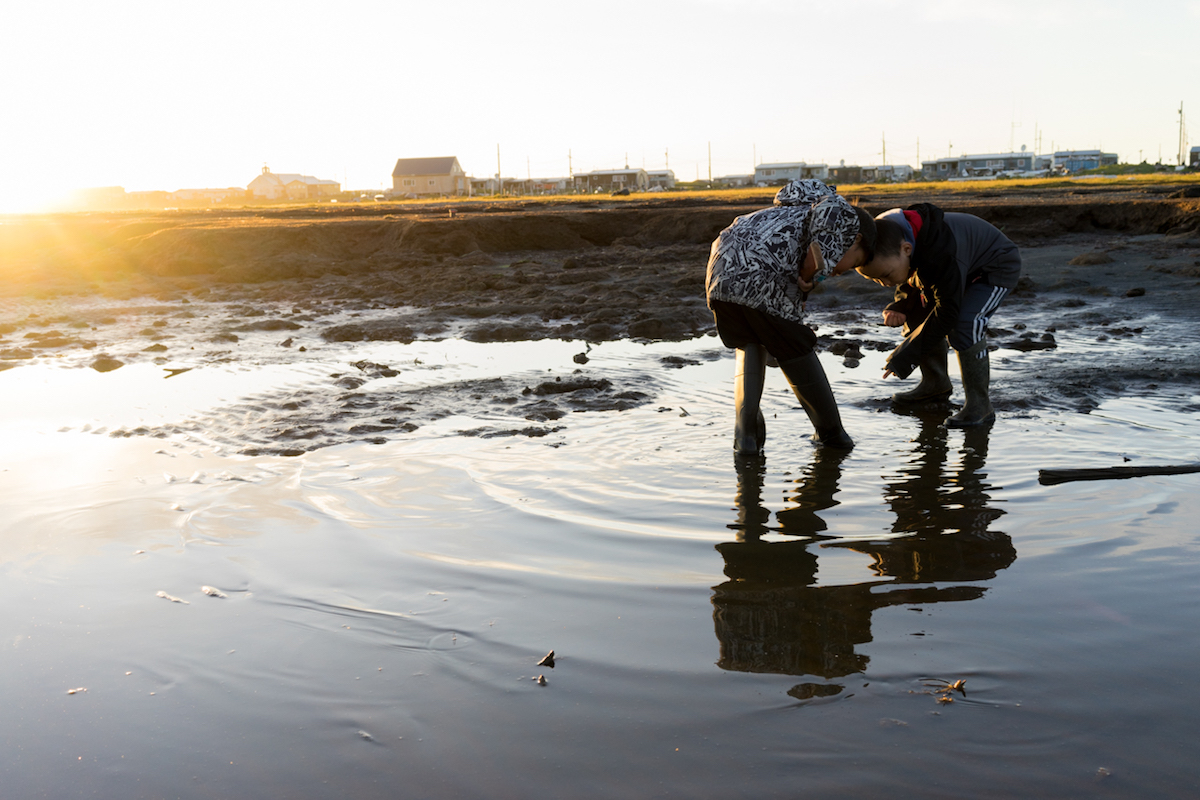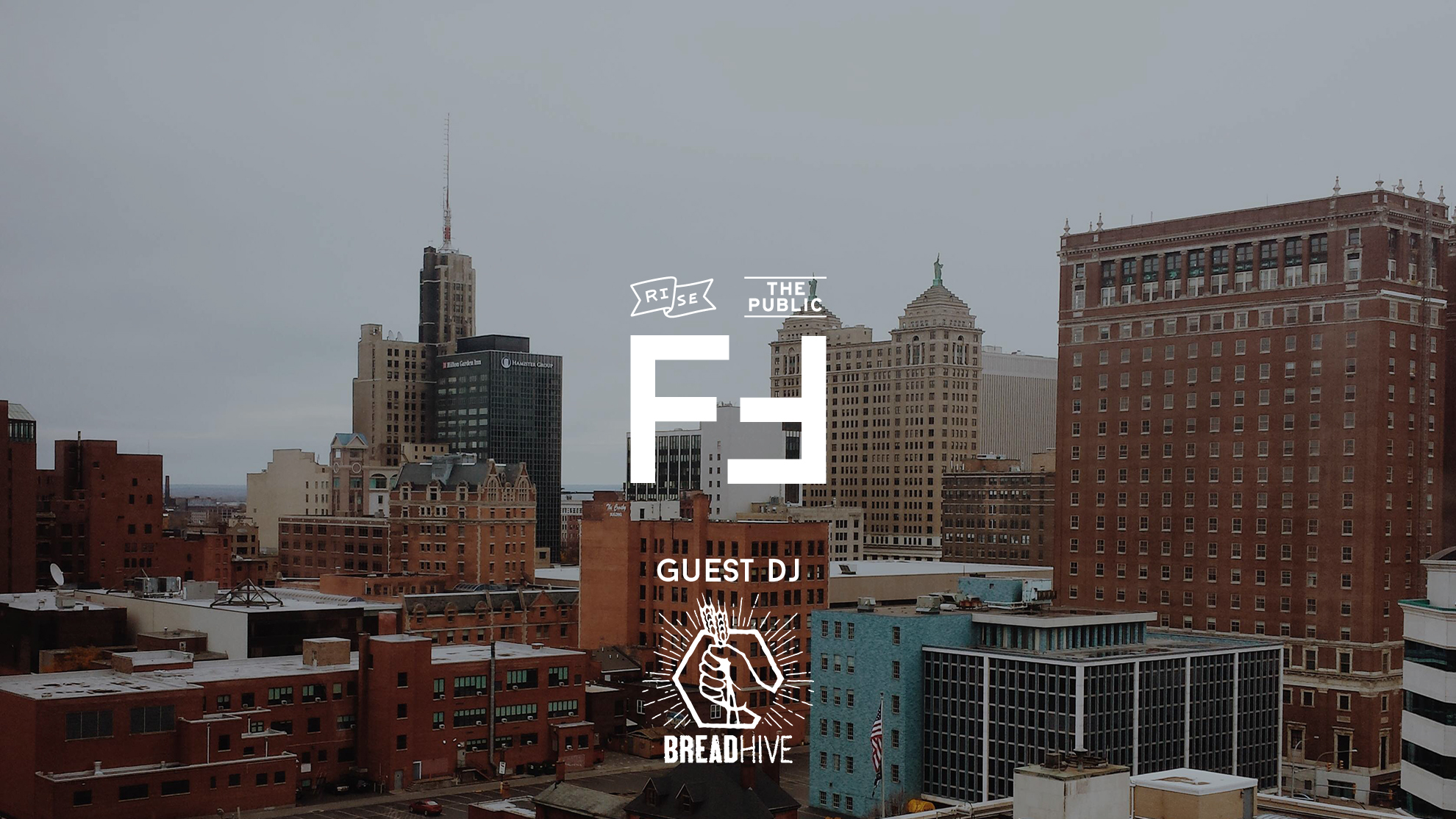Photo by Nick Mott. Shishmaref, Alaska.
There are sled puppies involved. Repeat, SLED PUPPIES INVOLVED.
Each week, we write ‘Listen Up’, a post about a podcast we’ve been listening to. You can then make up your own mind whether to add it to your own podcast playlist or not. Simple.
A few weeks ago, Holly (producer and host of Rise’s podcast LIFTED) wrote about a podcast that was not so simple. Threshold, Season Two is about the the Arctic – yup, a pretty big subject – and she freely admitted to getting “schooled”(read her post here). Although the Arctic is complicated, Threshold takes the time to “find out what the Arctic is, how it is changing, and why it matters.” The podcast aims to do this by focusing on the stories of the people that live in all eight countries of the Arctic Circle. Rise got a chance to interview producer on the show, Nick Mott. Nick spoke with us about his Arctic adventures recording Threshold, as well as how climate change and colonization are impacting those that live there. Oh and sled puppies.
What is Threshold?
Threshold is a podcast and public radio show. Each season we explore one story of the natural world in depth. Season one was all about bison in the west, and season two was about the rapid changes happening in the Arctic. To us, people are an inextricable part of the environment – so our storytelling always focuses on humans and character, not just science or landscape.
What is your role in the making of the podcast and what does that entail?
I’m producer on the show. I actually started as an intern. I met Amy, our executive producer, on my very first day of grad school in Boulder, Colorado, and fell for the show almost immediately. As producer, I edit, report, and write content. But since we’re a tiny team, I also do everything from grant writing to awards application as well. For season two of the show, I was lucky enough to accompany Amy reporting in Shishmaref and Nome, Alaska, and go on a solo reporting trip to Arctic Canada.
Why did you make season two about the Arctic – it’s a pretty big subject to take on!
The Arctic’s feeling the effects of climate change faster than anywhere. And this part of the planet also has huge implications for everywhere else. One example is melting permafrost, which contains more than twice the carbon dioxide that’s currently in the atmosphere. And then there’s melting sea ice, the accelerated melt of the Greenland ice sheet, the albedo effect – it all has effects across the globe. But most of the talk about the Arctic is all focused on this stuff: ice sheets, polar bears, that kinda thing. We wanted to both dive into these important concepts, but also challenge that narrative. Four million people live in the Arctic, and we wanted to explore these changes through their eyes.

Photo by Nick Mott. Shishmaref, Alaska.
“All across the Arctic, climate change wasn’t a question of science or opinion; it was lived experience.”
To make Threshold, you visited all eight countries of the Arctic. Aside from their geographical location, what else did these places have in common?
We found huge variance across the Arctic – we visited small villages and a city of more than 300,000. But of all the people we spoke to across these countries, only one or two were skeptical of human-caused climate change. So all across the Arctic, climate change wasn’t a question of science or opinion; it was lived experience.
How long did season two take to make?
We spent about 18 months researching, reporting, and producing the season.
Some interesting places and scenarios are featured in the podcast. What was the most exciting thing to record?
I think Amy’s answer would be different than mine. But my answer’s easy: when I was reporting in Iqaluit – the capital city of Nunavut, a giant territory in northeastern Canada – I got invited out to meet a team of sled puppies. Their owner, Laura, was raising her first dog team. It’s a bit of a complicated story, but starting in the 1950s, the Canadian government slaughtered tens of thousands of dogs. It was part of the colonization process. At the same time, snowmobiles gained popularity and people were living more stationary lifestyles in settlements – but the end result was that dog culture started to fade away. So it was a pretty big deal for an Inuit woman to re-learn these skills.
To teach pups to run as a team, you harness up the momma dog and run around the tundra with the puppies trailing behind. As we got set up to do this, another sled dog named Harpoon was running around wherever he chose. It was a beautiful day: something like -25, a gorgeous sunset. So I set my gear down to take a photo. And, silently, Harpoon darted underneath me, snatched my microphone, headphones, and recorder, and darted off towards the sunset.
I think my mic looks a bit like a dog toy.

Photo by Nick Mott. Iqaluit, Canada
I learn something new every time I hit ‘play’ on an episode of Threshold. I particularly enjoy learning about people’s experiences living in the Arctic Circle. What was the most surprising thing you learned from making the show?
Something we tried to show throughout the season was that climate change is just one pressure pushed in from the outside across the Arctic. Colonization was on the minds of nearly everyone we talked to. In Arctic Canada, for example, it really surprised me just how recently this happened – colonization really hit full force from the 1950s to the 1970s. And everywhere we visited, those effects lingered in heartbreaking and surprising ways.

Photo by Nick Mott. Shishmaref, Alaska.
“It’s vibrant – and that vibrancy comes from culture, not just from landscape.”
What were the major challenges in creating this show? How did you attempt to overcome them?
Visiting eight countries is a huge project. Our challenges were numerous – but time and funding were definitely two of our largest concerns. From an editorial perspective, distilling all that content down to a coherent narrative was also a huge challenge. There are so many voices we loved that never left the edit room. Also, the logistics of working in the cold were tricky! Batteries don’t last long in minus-40-degree weather – and neither do fingers.
What do you hope people will gain from listening?
We hope that the Arctic won’t feel so far away. I think before I started reporting for this season, it felt like an alien world, and a barren one. But I hope our reporting shows that this area isn’t a blank slate. People live there. It’s vibrant – and that vibrancy comes from culture, not just from landscape.
You can listen to Threshold wherever you get podcasts, or directly at their website: www.thresholdpodcast.org.
And below, via Spotify:




